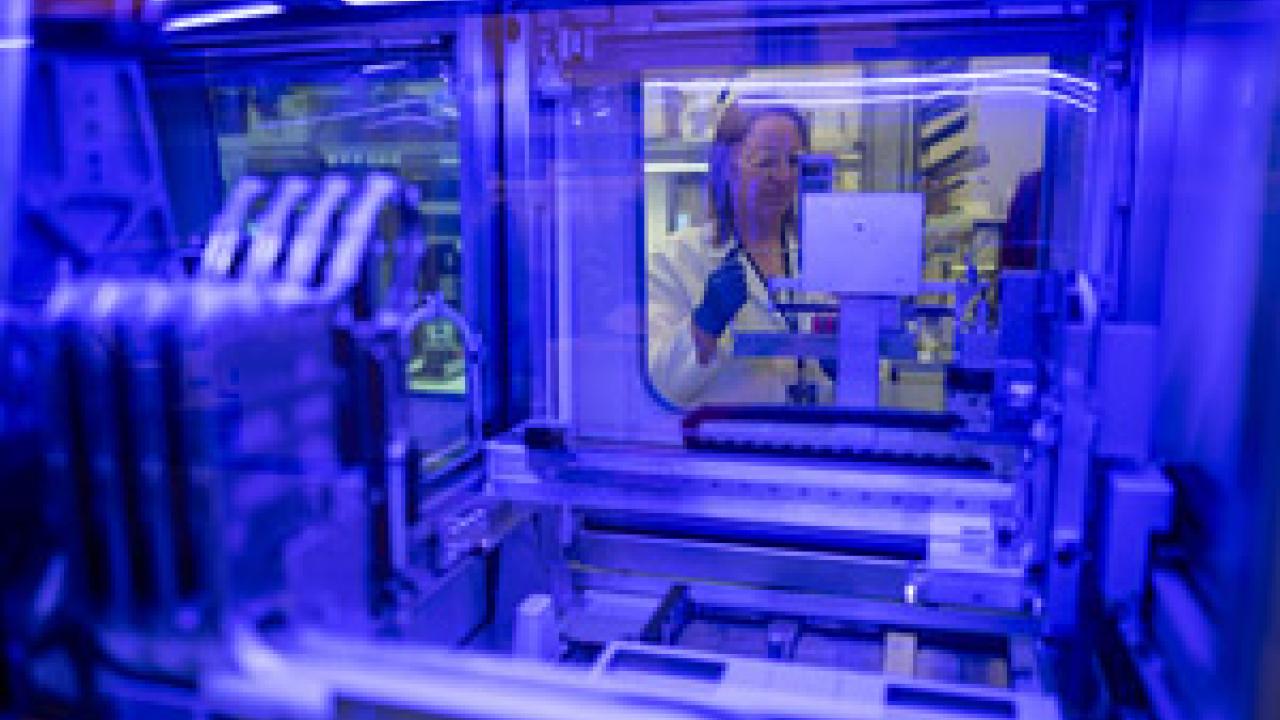
Different types of COVID-19 tests explained
UC Davis Health is among the first in the nation to roll out a groundbreaking, highly accurate test that can check for both COVID-19 and flu viruses at the same time. It returns results in 20 minutes and the method of testing is considered the gold standard for coronavirus.
The rapid point-of-care test is a PCR-based method, which is similar to what UC Davis Health has used in its lab since March, running hundreds of tests a day, often delivering results in hours. The accuracy is close to 100%. What is new is the combination of accuracy and speed, plus the ease of a single test to detect the coronavirus and A and B flu viruses.
“There can be a lot of confusion about testing,” said Nam Tran, professor of laboratory medicine and UC Davis Health site principal investigator for the clinical validation of the new test. “We want people to be confident they can trust our new point-of-care test just as much as our laboratory test. Both are PCR tests, which is considered the gold standard for testing.”
To understand the differences in the tests, it helps to understand the range of tests available for COVID-19.
Diagnostic tests that determine if someone has an active COVID-19 infection fall into two categories: antigen tests, which are mostly used for rapid testing, and molecular and PCR tests.
Antigen tests
Until now, the majority of rapid diagnostic tests have been antigen tests. They are taken with a nasal or throat swab and detect a protein that is part of the coronavirus. These tests are particularly useful for identifying a person who is at or near peak infection. Antigen tests are less expensive and generally faster. The downside is that they can be less accurate.
“You don’t need complex and expensive test kits to detect the antigens,” Tran said. “That makes them cheaper and faster. The problem is, there is a little lag time between when someone gets infected and when the antigens show up.”
That means, if a person is not near peak infection – but is still contagious – the tests may come back negative. Depending on the quality of the antigen test and the test takers, false negatives could be as high as 20%.
“Here’s a good way to look at this,” Tran said. “The coronavirus replicates itself by putting its genetic material inside our cells. If you’re testing that person at the stage when the virus is still replicating inside the cells, it has not produced sufficient protein or shed in large enough amounts to be detected yet by antigen testing.”
The Centers for Disease Control and Prevention (CDC) has advised people who show COVID-19 symptoms but test negative with a rapid antigen test to get a PCR test to confirm the results.
Positive antigen tests are considered much more accurate, but they still can produce false positives. The concern, Tran said, is false positives could be caused by the presence of other viruses, improper collection techniques, or other substances produced by the body during infection interfering with the results. However, he said, antigen testing technology continues to improve.
Molecular/PCR tests
This is another area where there is some confusion. Not all molecular tests use the polymerase chain reaction (PCR), but PCR serves as the mainstay of COVID-19 diagnostic testing. PCR has also become a common shorthand in many media reports.
Molecular tests detect genetic material – the RNA – of the coronavirus and are sensitive enough to need only a very tiny amount of it.
Until now, the best PCR tests generally required trained personnel, specific reagents and expensive machines. The sample is collected with a nasal or throat swab and they tend to take hours to provide results. Good PCR tests like the ones used over the past eight months at UC Davis Health’s lab are close to 100% accurate.
However, not all molecular tests, including PCR methods, are perfect. Some lesser testing platforms have reported false negative rates as high as 15% to 20%.
Both of UC Davis Health’s tests, the rapid COVID-19/flu test and the lab test for COVID-19, are highly sensitive, highly specific PCR tests.
“They are able to pick up very small amounts of viral RNA very early in an infection, so there is a low chance for false negatives, including among pre-symptomatic and asymptomatic COVID-19 cases,” Tran said.
The sensitivity of molecular methods can be a double-edged sword. In some cases, it can still detect the virus’ genetic material after a patient has recovered from a COVID-19 infection and is no longer contagious.
Plus, this coronavirus is still so new to science, nothing is certain.
“PCR is considered the gold standard for many viruses we’ve seen in the past,” Tran said. “But we can’t be certain with SARS-CoV-2. Clearly, we have a lot to learn about this virus and we are all learning in real time.”
Antibody tests
These are not considered diagnostic tests that can determine if someone has an active COVID-19 infection. They use blood samples to look for antibodies produced by a person’s immune system to help fight off COVID-19.
These can detect if someone had a past COVID-19 infection but not if they still are positive for the virus. Tran said antibody tests may have more value once an effective vaccine becomes available.